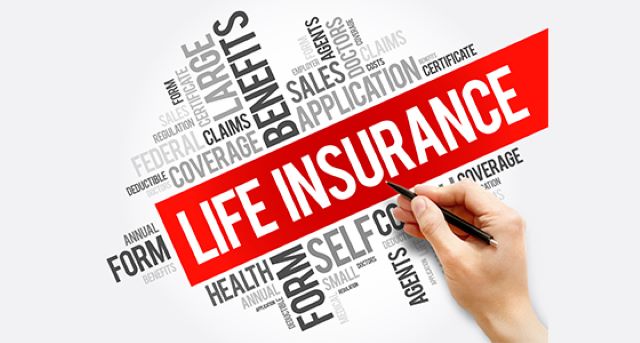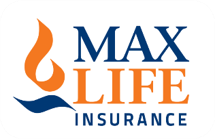Your Legacy, Your Choice: Term or Whole Life Insurance – Making Every Moment Matter!

Life insurance plays a crucial role in securing the financial future of your loved ones, providing a safety net in times of need. Choosing the right type of life insurance is a pivotal decision, with term life and whole life insurance emerging as two popular options. In this article, we will delve into the nuances of term and whole life insurance, exploring their key features, advantages, and disadvantages to help you make an informed decision.
Term Life Insurance:
Definition and Key Features:
Term life insurance is a temporary form of coverage designed to provide a death benefit for a specified period, typically ranging from 10 to 30 years. Key features include customizable term lengths, no cash value accumulation, and lower premiums compared to whole life.
Pros:
- Affordable Protection for Specific Needs: Term life insurance offers a cost-effective solution, making it ideal for individuals with specific financial obligations such as mortgages, education expenses, or income replacement during the working years.
- Flexible Terms: Policyholders have the flexibility to choose a term that aligns with their needs, providing coverage during critical life stages.
- Pure Protection Focus: Term life insurance focuses solely on providing a death benefit, making it a straightforward and transparent option.
Cons:
- No Cash Value Benefit: Unlike whole life insurance, term policies do not accumulate cash value over time.
- Potential Premium Increases upon Renewal: Renewing the policy at the end of the term may result in increased premiums, especially if the insured’s health has deteriorated.
- Limited Coverage Options: Term life insurance might not be suitable for individuals seeking lifelong coverage or wealth accumulation.
Whole Life Insurance:
Definition and Key Features:
Whole life insurance provides permanent death benefit coverage throughout the policyholder’s lifetime. It features guaranteed premiums, cash value accumulation, and higher premiums compared to term life.
Pros:
- Dual Benefit: Protection and Wealth Building: Whole life insurance combines a death benefit with a cash value component, allowing policyholders to build wealth over time.
- Lifetime Coverage and Peace of Mind: With whole life insurance, policyholders enjoy lifelong coverage, providing peace of mind for themselves and their beneficiaries.
- Predictable Costs: Premiums remain consistent throughout the life of the policy, offering financial predictability.
Cons:
- Expensive Premiums Compared to Term Life: Whole life insurance premiums are higher, making it a more substantial financial commitment.
- Limited Cash Value Growth Potential: While cash value accumulates over time, the growth potential is often lower than alternative investment options.
- Less Flexibility and Potential Fees for Accessing Cash Value: Accessing the cash value may involve fees, and the investment options within the policy may be limited.
Choosing the Right Policy:
Consider Your Needs and Goals:
- Budget & Affordability: Evaluate your financial situation to determine the premium amount you can comfortably afford.
- Coverage Needs (Temporary vs. Lifelong): Assess whether you require coverage for a specific period or lifelong protection.
- Risk Tolerance: Consider your risk tolerance and whether you prioritize guaranteed benefits or are open to investment risk.
- Investment Strategy: Evaluate your overall investment strategy and whether you prefer a straightforward insurance product or one with wealth-building potential.
Additional Factors:
- Compare Quotes from Various Insurers: Shop around for quotes from different insurers to ensure you get the best possible rates.
- Seek Professional Financial Advice: Consult with a financial advisor to receive personalized guidance based on your unique financial situation and goals.
- Read the Fine Print Before Signing: Thoroughly review the policy terms and conditions to understand any limitations, fees, or potential changes in premiums.
In conclusion, the choice between term life and whole life insurance depends on individual circumstances, financial goals, and risk tolerance. It is crucial to weigh the pros and cons of each option and align them with your specific needs. Remember, making an informed decision is paramount to ensuring financial security for yourself and your loved ones.
For additional read on Life Insurance
- Life Happens (lifehappens.org):
- Life Happens is a nonprofit organization dedicated to helping individuals make informed decisions about life insurance. The website offers educational resources, calculators, and real-life stories to provide a comprehensive understanding of the importance of life insurance.
- Insurance Information Institute (iii.org):
- The Insurance Information Institute is a reliable source for insurance-related information. Their website includes detailed guides on life insurance, industry statistics, and consumer resources to help individuals navigate the insurance landscape.
- National Association of Insurance Commissioners (naic.org):
- The NAIC provides valuable insights into insurance regulation and consumer protection. Their website offers educational materials, including guides on understanding different types of insurance, which can be beneficial for those exploring life insurance options.
- Smart About Money (smartaboutmoney.org):
- Smart About Money is a resource provided by the National Endowment for Financial Education (NEFE). The website offers courses, tools, and articles on various financial topics, including life insurance. It’s a great resource for individuals looking to enhance their overall financial literacy.
- Investopedia – Life Insurance Section (investopedia.com):
- Investopedia is a widely recognized source for financial information. The life insurance section provides articles, guides, and tutorials on different aspects of life insurance, catering to both beginners and those looking for more advanced information.
- The Wall Street Journal – Insurance Section (wsj.com):
- The Wall Street Journal’s insurance section covers a range of topics related to insurance, including life insurance. It provides in-depth articles, expert opinions, and analyses that can help readers stay informed about industry trends and developments.
- Policygenius (policygenius.com):
- Policygenius is an online insurance marketplace that offers educational content on various insurance products, including life insurance. Their website features guides, calculators, and tools to help individuals understand their insurance needs and compare policy options.








